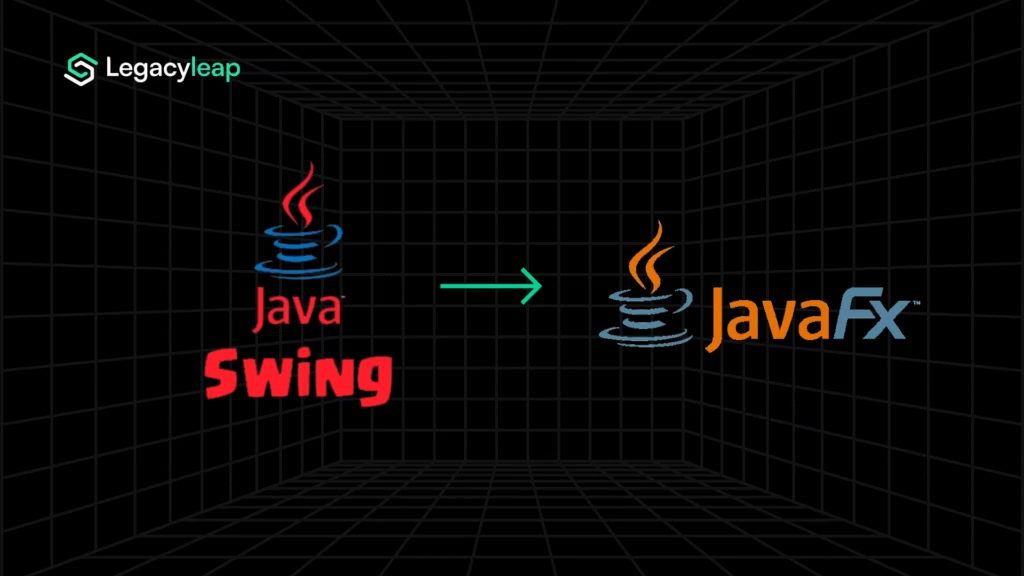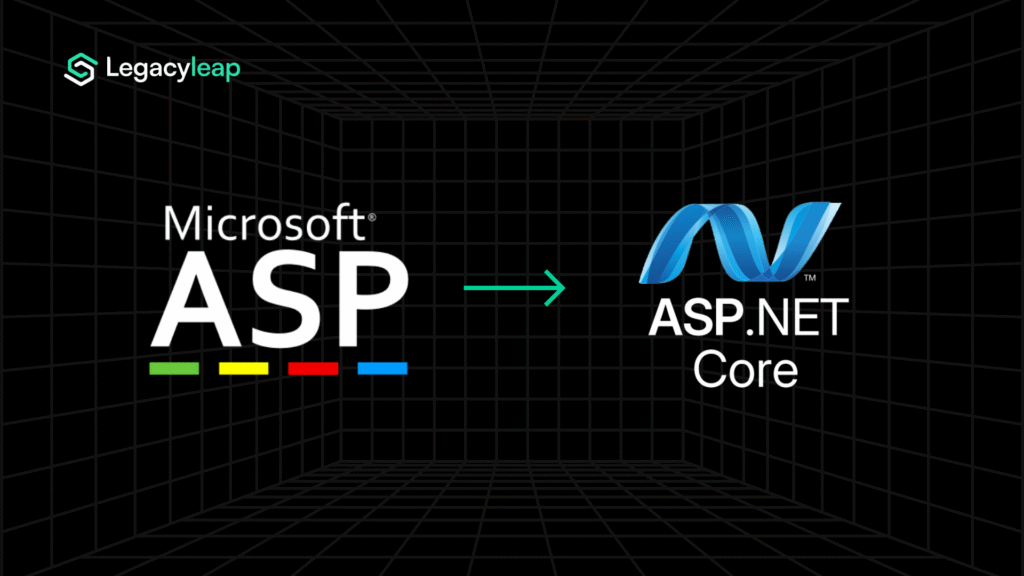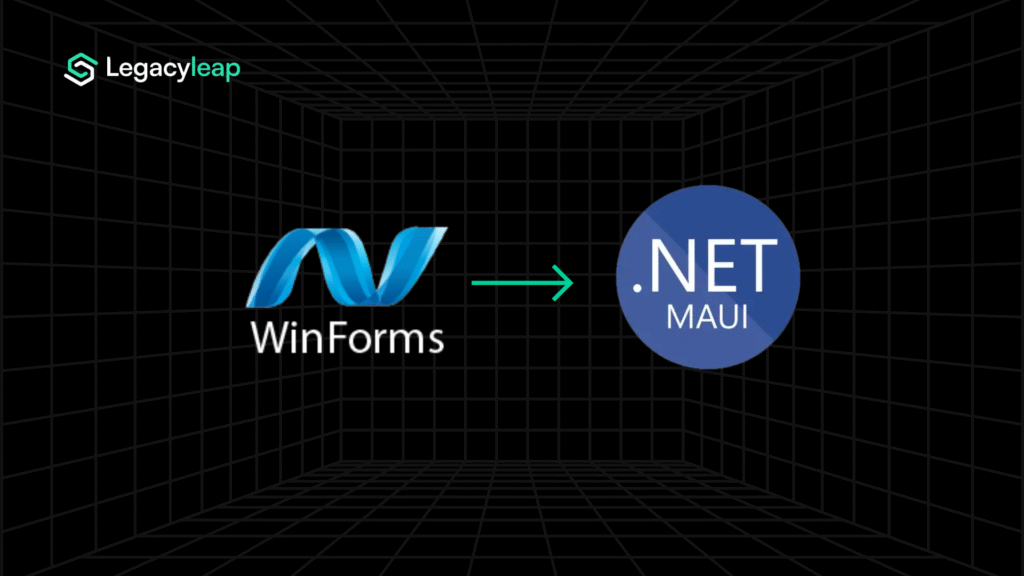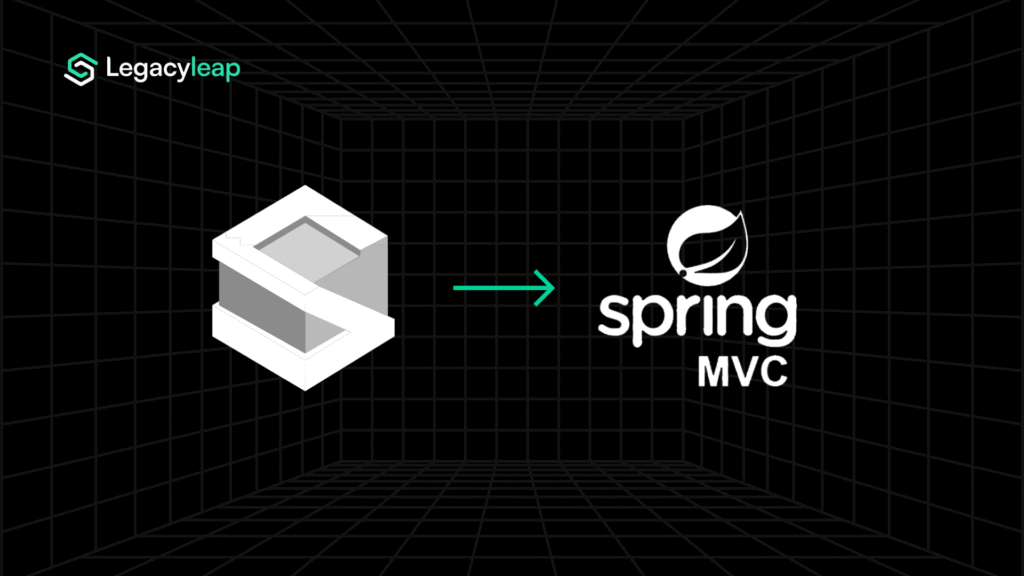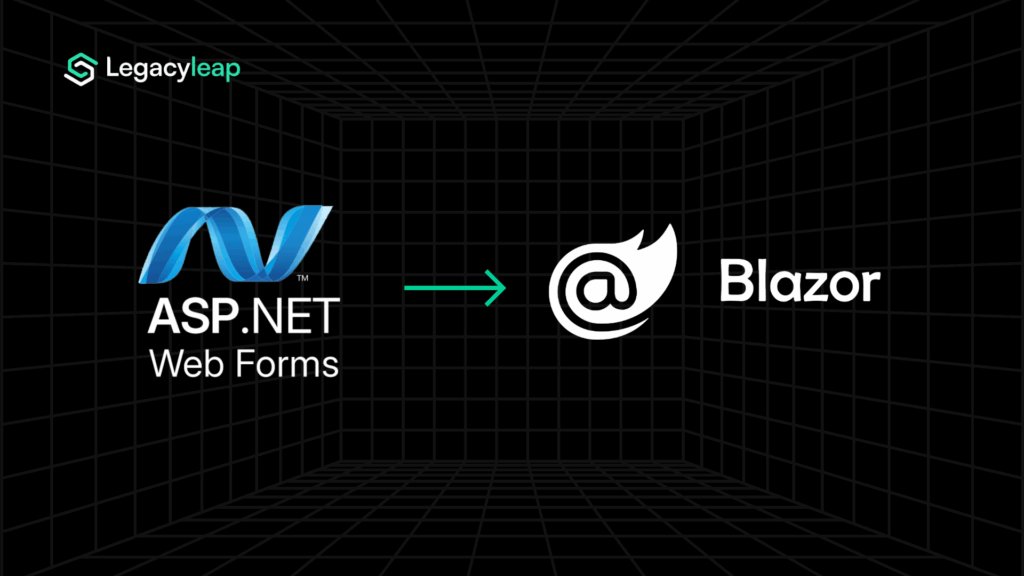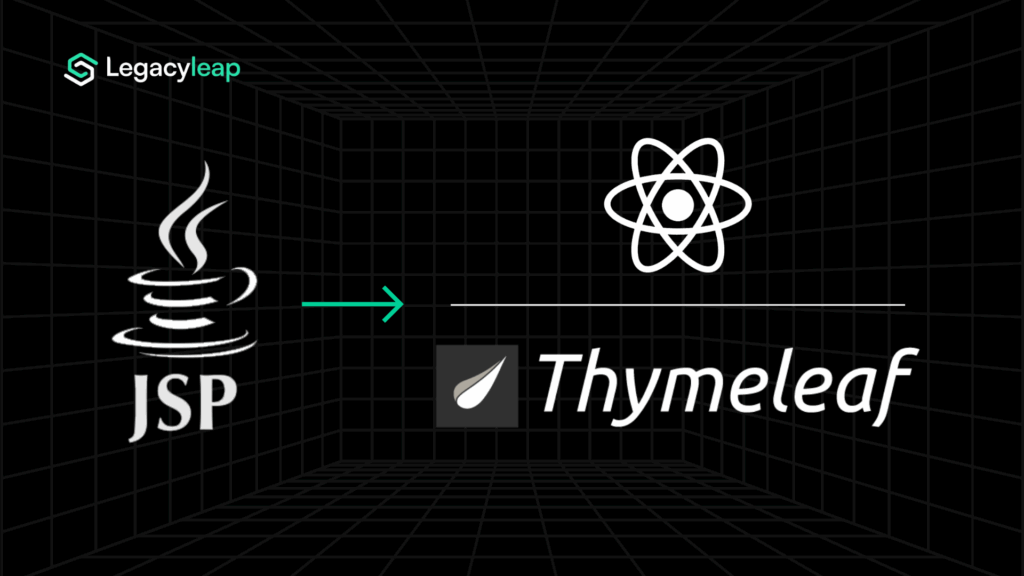Introduction: Why Enterprises Must Move Beyond JSF
For years, JavaServer Faces (JSF) powered enterprise web UIs with a standardized, component-driven model. Today, it’s a liability. Its server-side rendering, managed-bean architecture, and XML-heavy configuration make it rigid, hard to scale, and incompatible with modern DevOps or cloud-native workflows.
The risks go beyond obsolescence. JSF’s tight coupling between UI and backend logic blocks API adoption, slows feature delivery, and drives up maintenance costs as developer support declines.
Modern frameworks like React, Angular, and Blazor deliver what JSF can’t: client-side agility, modularity, and cloud readiness. The challenge is modernization without disrupting core workflows or breaking stateful dependencies.
That’s where Legacyleap’s Gen AI modernization framework comes in, untangling dependencies, isolating business logic, and validating every UI migration step for safe, verifiable execution.
React vs Angular vs Blazor: Which Framework Best Replaces JSF?
| Capability | JSF (Legacy) | React | Angular | Blazor | Enterprise Impact |
| Architecture | Server-side, stateful components tied to servlet containers | Client-side, component-based, API-driven | Full-featured SPA framework with strong TypeScript patterns | .NET-powered SPA model using WebAssembly | Modern, stateless architecture enables scalable deployments and responsive UX |
| Cloud Readiness | Servlet-bound, monolithic | API-first, container-friendly | API-first, container-friendly | Deep Azure integration, runs in browser via WASM | Enables CI/CD pipelines and hybrid-cloud portability |
| Developer Productivity | XML-heavy, limited tooling | Vast ecosystem, reusable components | Opinionated patterns and enterprise-grade CLI | Natural fit for .NET teams | Faster iteration, reduced ramp-up time, easier hiring |
| User Experience | Server-rendered, page reloads | Rich, interactive SPAs | Highly scalable enterprise UIs | Modern C# front-ends | Consistent, dynamic, mobile-ready interfaces |
| Ecosystem Alignment | Shrinking community | Ideal for Java/Spring backends | Ideal for Java/Spring backends | Ideal for .NET-centric environments | Long-term viability and continuous evolution |
React and Angular are natural fits for Java-based enterprises aiming to modernize within the Spring ecosystem, while Blazor serves organizations already invested in .NET stacks. The right choice depends on existing backend alignment and future platform strategy.
Regardless of the framework, the modernization journey follows the same principle: decouple, refactor, and verify. Legacyleap’s Gen AI platform enables this by automatically mapping JSF’s managed beans, UI hierarchies, and backing logic to modern component structures, before the first screen is rewritten.
Also read: A Complete Java Migration Guide for Modernizing Legacy Enterprise Stacks.
Key Challenges and Proven Strategies for JSF Modernization
JSF modernization is an architectural redefinition. Most enterprise JSF systems have grown organically for years, blending presentation logic, state management, and backend workflows into one tightly coupled layer.
That makes modernization less about redesigning screens and more about untangling decades of interwoven logic.
Here are the five most common challenges enterprises face:
- Stateful components: JSF’s server-managed state model must be reimagined for modern architectures built on stateless APIs and client-side rendering. Every form submission, session scope, and page flow needs to be re-engineered to function independently of the servlet lifecycle.
- Embedded business logic: Managed beans often contain both UI and business logic. This logic must be extracted into dedicated backend services or REST/GraphQL endpoints before the frontend can safely migrate.
- Custom UI components: Many JSF apps rely on vendor libraries like PrimeFaces or RichFaces, which have no direct React or Angular counterparts. These must be decomposed into reusable component hierarchies that replicate both structure and behavior.
- Session and security management: JSF’s session-heavy model differs from modern token or client-side authentication flows. These require re-mapping to OAuth2 or JWT mechanisms without breaking continuity for logged-in users.
- Testing voids: Legacy JSF apps typically lack automated UI tests, making parity validation a blind spot during modernization.
Proven strategies for modernization include:
- Phased migration: Gradually introduce React, Angular, or Blazor modules alongside existing JSF flows using the Strangler Fig pattern, ensuring zero downtime.
- API-first enablement: Decouple business logic from managed beans into REST or GraphQL APIs before UI reconstruction.
- Parallel modernization: Target high-value modules (e.g., customer dashboards, reporting screens) for early migration while maintaining legacy stability elsewhere.
These strategies work best when guided by system-wide visibility, something only achievable through intelligent dependency mapping and automation. That’s where Gen AI plays a decisive role.
How Gen AI Simplifies and Accelerates JSF to React, Angular, or Blazor Migration
Modernizing JSF applications by hand is risky and time-intensive. Dependencies are rarely documented, managed beans reference each other implicitly, and one small state-handling error can disrupt entire workflows. Gen AI changes that by turning the process from manual discovery into automated comprehension and verified execution.
Here’s how it works in practice:
- Dependency untangling: Gen AI scans managed beans, component trees, and navigation flows to generate a graph of dependencies. This visual model identifies what can be migrated, in what order, and with which upstream/downstream impacts.
- Automated component mapping: Each JSF page or composite component is mapped to its React, Angular, or Blazor equivalent. The AI isolates UI logic from backend bindings and preserves API contracts to maintain functionality.
- Session re-mapping: State usage across beans and pages is analyzed. The AI suggests token-based or client-side state alternatives, allowing migration from HttpSession to OAuth2/JWT flows without rewriting business rules.
- Automated test generation: Regression suites are auto-created to benchmark modernized UI behavior against the JSF baseline, ensuring functional parity and faster QA cycles.
The result is modernization that’s 60-70% faster, with verified logic integrity and full traceability of every change.
What once required months of manual reverse-engineering now becomes a governed, model-driven process, ready for enterprise-scale rollout through Legacyleap’s Gen AI framework.
Also read: How Can Gen AI Drive Every Step of Your Modernization Journey?
Legacyleap in Action: Verified UI Modernization
Modernizing JSF applications isn’t just about replacing components, but about doing it safely, at enterprise scale. Legacyleap combines Gen AI precision with compiler-grade governance to ensure every migration step is traceable, validated, and compliant.
Here’s how the platform de-risks JSF modernization:
- Graph-based system modeling: Before a single refactor, Legacyleap maps managed beans, navigation flows, and service dependencies into a unified graph model. This delivers 100 % visibility into how UI elements interact with backend services and session logic.
- Inside-enterprise execution: All AI processing runs within the enterprise environment and never through external APIs, meeting strict data-governance and security requirements for BFSI, healthcare, and public-sector systems.
- Compiler guardrails + human oversight: AI-driven transformations are constrained by compiler validations and reviewed at defined checkpoints, ensuring structural correctness and auditability at each iteration.
- End-to-end modernization assets: Beyond code transformation, Legacyleap auto-generates REST endpoints, regression test suites, Swagger documentation, and deployment manifests, extending modernization from code to production readiness.
Measured outcomes:
- 100% dependency mapping of UI and service layers before migration begins.
- 65–70% automation in JSF → React/Angular/Blazor component refactoring.
- 90%+ regression-test coverage validating functional parity.
- Predictable, shorter delivery timelines for phased migrations.
With Legacyleap, modernization is a governed, verifiable engineering process executed entirely within enterprise control.
Also read: Why Legacyleap Is Your AI Companion Platform for Enterprise-Scale Modernization.
Conclusion: A Verified Path Beyond JSF
Remaining on JSF means carrying technical debt into every release cycle: limited scalability, outdated UI experiences, and rising maintenance risk. Frameworks like React, Angular, and Blazor unlock the responsiveness, modularity, and cloud alignment that modern enterprises need.
The key is migrating with precision. Legacyleap’s Gen AI-driven approach untangles stateful components, isolates business logic, and validates each modernization step with compiler-level assurance. Enterprises gain faster delivery, functional parity, and modernization that’s verifiable at every checkpoint.
Start with a $0 JSF Assessment to map your managed-bean dependencies, analyze migration risks, and get a tailored modernization roadmap built for your enterprise.
FAQs
React offers flexibility and a rich ecosystem for Java-centric teams but requires additional tooling for state management and routing. Angular provides an opinionated, enterprise-grade framework with built-in tools like RxJS, making it ideal for complex apps. Blazor, on the other hand, suits .NET-heavy shops by offering SPA capabilities in C# via WebAssembly. The choice depends on your backend alignment and enterprise stack standardization.
Timelines vary based on codebase complexity and UI coupling, but with Gen AI-assisted tooling from Legacyleap, most medium-scale JSF apps can be migrated in 3-6 months. The platform accelerates timelines by auto-mapping managed beans, generating modern UI components, and validating functionality via regression tests, all with compiler oversight and human validation.
Using a phased Strangler Fig approach, enterprises can incrementally route traffic between legacy JSF pages and modern React/Angular components. Legacyleap supports this by generating proxy APIs, preserving backend compatibility, and orchestrating deployment plans that allow legacy and modern stacks to run in parallel until full cutover.
Legacyleap automates this step using Gen AI-driven dependency untangling and API scaffolding. Managed beans are extracted and transformed into modular REST or GraphQL endpoints, preserving business logic while decoupling UI state from server context. This drastically reduces the need for manual re-architecture.
Legacyleap validates every migration using AI-generated regression test suites, compiler-level mapping verification, and human-in-the-loop QA checkpoints. Every UI element and API interaction is tested against the original JSF behavior to guarantee business logic consistency and functional parity post-migration.



